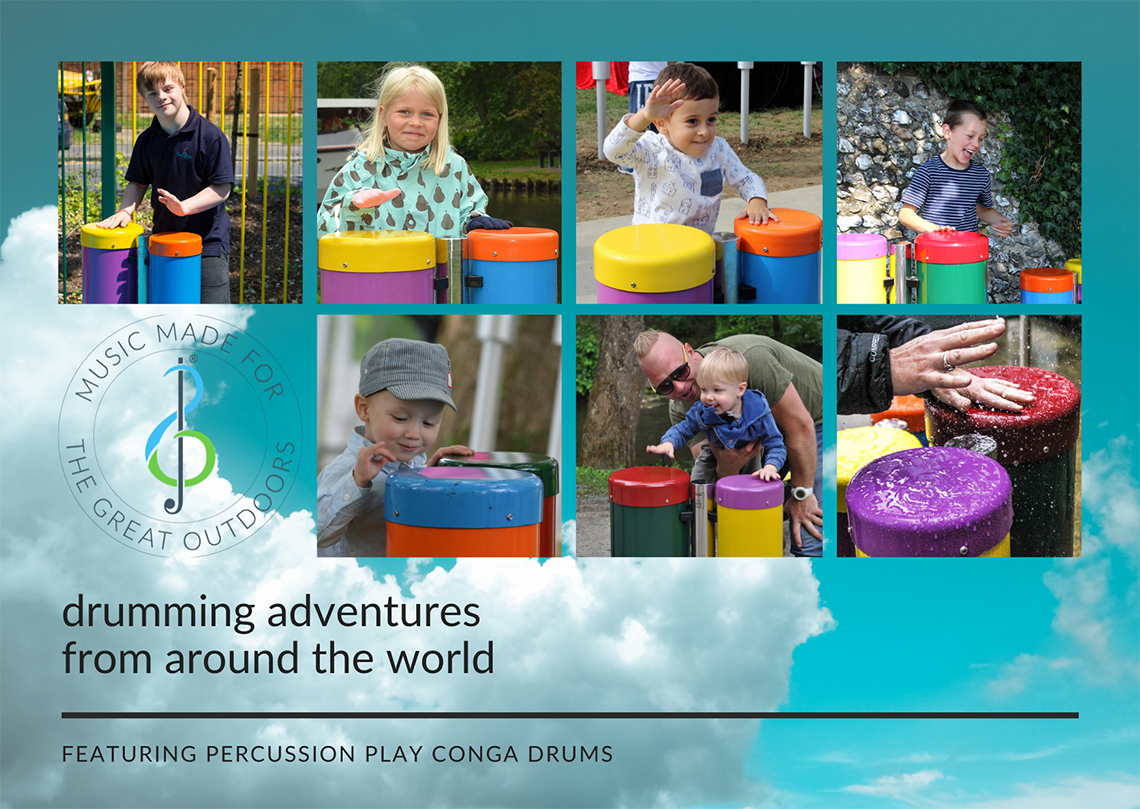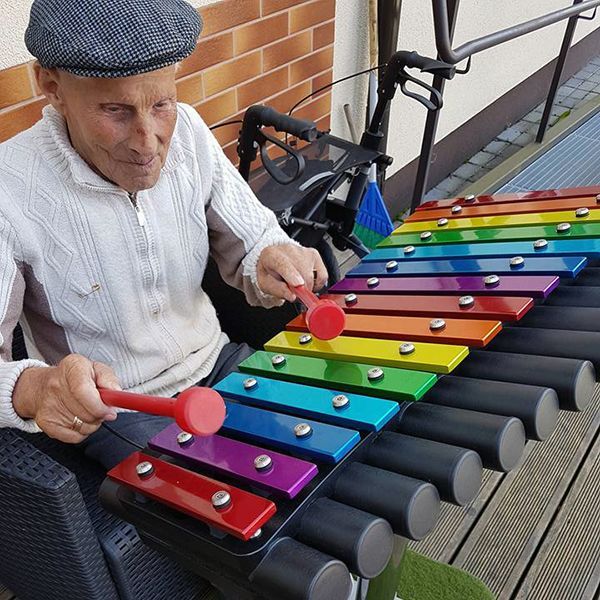From Outdoor Music Lessons to Percussion Therapy - Happiness is a Pair of Congas!
Bright, colorful, and hugely entertaining, our Conga Drums are most certainly one of our most popular products, and it's not hard to see why. Fantastic value for money, the Congas are an instrument of improvisation, making them fun outdoor percussion equipment for kids of all ages - there's just something about playing them that brings out the child inside, whatever age we are! There is a drummer inside almost each and every one of us if we're prepared to let go of our inhibitions and just give it a go, and hey, kids shouldn’t have all the fun right?
Playing Congas is a superb energy outlet. If you or your child have lots of built-up energy and really want to thrash out some beats these outdoor Conga Drums are extremely tough and durable. Admit it: it feels good to hit things, and drumming can even improve a bad mood by releasing endorphins! Slapping the drumhead creates a loud, snapping sound. Slapping is one of the harder strokes to master, as you must cup your hand a specific way in order to create the right sound. Slapping can involve your fingers as well as the heel of your hand, and you can alternate fingers and heel to create a fast beat.
However, it's worth noting that these Congas are very responsive and you don't need to hit them hard to produce their wonderful soft deep sounds. A fast tempo requires a lot of momentum, which will lend to a louder, pounding rhythm but if you slow it down a bit, your volume can go down, too. If you rest your fingertips on the drum head instead of letting them rebound off, you'll muffle the natural tone of the drum. Tap the drum gently with your fingertips and the tones will be soft and quiet. Bass tones are slightly different in that you use your full palm while beating the drum. Striking in this way can produce a low register, quiet sound. Alter your beats with finger taps to produce rhythm.
The Conga Drums can adjust to any player's skill level. Whether they’re young, with little hands and just experiencing making music for the first time; or a little older and working on arranging beats into a rhythm, Conga Drums can be enjoyed by everyone. For outdoor music lessons, Conga Drums are perfect for learning coordination and rhythm and can be used to help children learn to coordinate both hands and how to keep a rhythm – both key attributes to the successful development of children in a variety of areas even beyond music.
At the other end of the spectrum, playing instruments such as the Conga Drumscan help people recover from the debilitating effects of a stroke. Percussion therapy can help stroke patients recover cognitive and communication skills, motor function, and mood stability. The sound and vibration from playing cause the hearing parts of the brain to connect more with the 'movement' parts. It can help people build new pathways to replace those lost by stroke damage. The advantage of percussion exercises is that they do not require musical expertise, and the strong repetitive beat improves learning by boosting brain focus. Add to that the benefits of being outside in the fresh air can really help music and occupational therapists help their patients begin the road to recovery.
Percussion Play Conga Drums
Percussion Play Conga Drums are a little different as they’ve been designed for permanent outdoor installation. Installing a pair or a trio of congas will certainly liven up your outdoor space, bring a little Cuban energy, rhythm, and soul and creating many new congueros!
Our Congas are a pair of single-headed drums mounted onto a stainless steel post to be installed directly into the ground. Made with heavy-duty ABS caps these strong and durable drums are painted in bright color combinations for visual appeal. Available as Congas (Pairs): Small | Medium | Large - each producing different tones or as Congas Trio with one of each pair.

Where did the Conga Drum originate?
Drums are one of the oldest forms of musical instrument, with a history stretching back thousands of years—and long before the invention of the modern drums sets, different kinds of drums played a major role in the music, traditions, and communication of many cultures around the world. It’s thought that Conga Drums originate from Africa with the name probably deriving from the Republic of the Congo (Congolese). Conga drums also have roots in Cuban music, it’s thought the conga drum came to Cuba during the slave trade. Among Cubans and aficionados, the name Tumbadora is considered more accurate and a musician who plays the conga is called a Conguero.
The conga drum is a tall and narrow drum with a single head and can be held between the knees of the musician, hung from the shoulders with a strong leather belt or mounted onto a tripod stand to hold it vertically. Conga drums were probably first made by covering empty rum barrels with animal hides, and tuned by heating the hides with a flame. As new ideas, techniques and materials have come along the conga has seen many changes since originally created. Rawhide is still the most popular material for conga drum heads, but today, synthetic heads, made of plastics and other materials, are also available.
The musician, or Conguero, strikes the drum with the palms, sides, and heel of his hands as well as the fingertips - if done correctly you can replicate all the different sounds of the drum set. Conga Drums are used in numerous musical styles but predominately Latin music. However, their distinctive sound works well with every genre from samba to R&B to rock ‘n’ roll.
